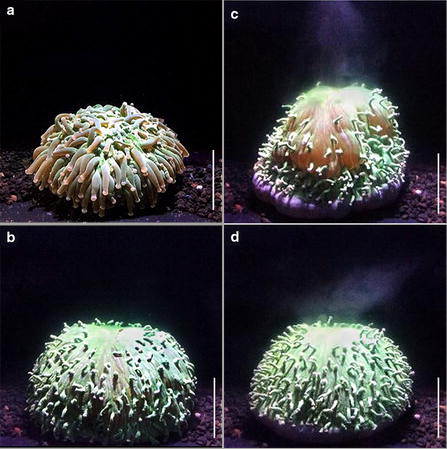For the first time coral researchers in Brisbane, Australia have recorded a time-lapse video of coral bleaching behavior. To capture the video researchers took a photograph every 3 seconds using a combination of digital camera, smart tablet and microscopes to record the detailed video.
To simulate rising sea surface temperatures researchers Brett Lewis and Dr Luke Nothdurft from QUT’s marine facility in the School of Earth, Environmental and Biological Sciences placed the coral in a 10-liter aquarium and raised the temperature from 26 to 32 °C in 12 h, and maintained the aquarium at 32 °C for the duration of the experiment (8 days).

The image above shows a solitary coral, Helifungia actiniformis, expelling algae through a behaviour known as pulsed inflation. As the water temperature rises the coral inflates it’s body to as much as 340 per cent their normal size before suddenly contracting and ejecting the sysmbiotic algae, (seen as greenish plumes in the video) through their oral opening.
The speed at which the algae was expelled came as a surprise to researchers. Within the first 2 hours of elevated temperature, the long tentacle plate coral began ejecting green zooxanthellae algae.
Corals have evolved a mutually beneficial relationship with the photosynthetic zooxanthellae algae. The coral provides protection for the time zooxanthellae, and the excess sugars created by the algae supply the majority of the coral’s daily food requirements.
The symbiotic algae are also responsible for the corals color, and once the algae are expelled, the corals tissue becomes white or transparent, referred to as coral bleaching. If environmental conditions return to normal quickly enough, some corals may regain their Symbiodinium and associated colour. However, if algae is removed from the host and does not recolonize quickly, the corals can die.
This is the first time-lapse video which shows coral expelling algae through pulsed inflation. [CoralReef]



